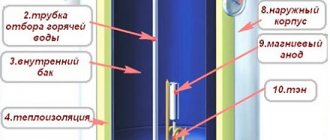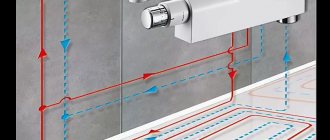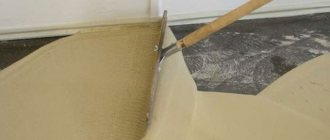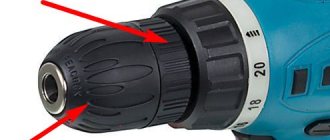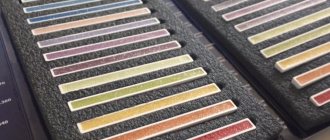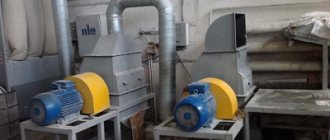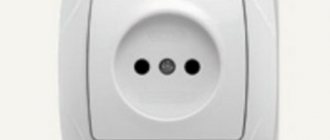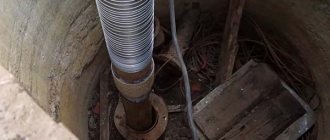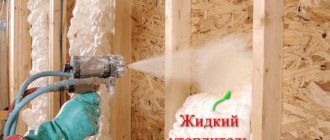Good day, dear amateur builders!
Are you planning a renovation? Do you need to seal joints, cracks and crevices? Don't know which tool to use? Friends, polyurethane foam will do this job flawlessly.
Don't have a construction gun? You can buy a relatively inexpensive tool at any specialty store. Did you spend a lot of money on renovations? No opportunity to purchase “weapons”? Understood.
In this case, here is the topic of the article - polyurethane foam without a gun: how to use this “construction gadget” without having some experience? Let's look at this in more detail.
Polyurethane foam sealant: a little theory
How to work with sealant without a foam gun? Very simple. But first, let's talk a little about the main character of this article - foam. For what? And then, to understand the principle of operation of polyurethane foam. I think no one wants to ruin the substance and the home. It is so? Great. Then let's get started.
Story
The sealant was born thanks to the German chemist-technologist Otto Bayer. He invented the substance back in 1937. Or rather, he discovered polyurethane. And in 1970, specialists from an English company invented polyurethane foam sealant.
It has been tested and improved over the years. In 1980 it was used by construction workers in Sweden. The invention was to the liking of many maestros of architectural art, since it had a number of positive properties.
Today, of course, sealant is produced in many countries. For its production, exclusively innovative technologies are used.
Concept
Polyurethane foam or polyurethane foam sealant is a substance that consists of two components - polyols and methyl...ate (you'll break your tongue there). In addition, in the manufacturing process of the product, stabilizers, catalysts, a mixture of butane and propane, etc. are used.
Recommendations for use
In order to avoid any problems during both minor and major repairs of your own house or apartment, you need to be able to use both professional and household foam. To work correctly with the first one, you must correctly install and use a special construction gun.
Gun installation includes the following steps:
- To begin, the foam balloon is heated in warm water to room temperature, after which it is shaken vigorously for 30 seconds. This will give the polyurethane a homogeneous state, which will allow it to come out of the cylinder smoothly and in full;
- The protective cap is removed from the upper tank of the gun, it is turned with the handle down and the cylinder is screwed into it. The container is screwed in with force until a hissing sound appears, which means that the mixture has begun to flow into the tool;
- if the gun has been previously used and has not been thoroughly washed, then the hissing will not be heard and you will have to purchase a new tool;
- The system of connected elements is shaken vigorously several more times, the adjustment screw is turned a quarter turn and, holding the trigger, they begin to apply.
Working with such equipment does not require specific skills, but it will require considerable dexterity if this is the first time.
Applying foam from a gun is performed as follows:
- first you need to clean the working surface from dust and dirt, then lightly wet it with a regular spray, since the foam interacts better with a wet surface;
- the tool nozzle is directed to the surface;
- foam is supplied in the required quantity by smoothly pressing the trigger;
- to pour the composition into a vertical recess, it must be applied from bottom to top;
- wide spaces are filled with zigzag movements of no more than a third of the volume, since the foam expands greatly in air;
- It is better to replenish the area afterwards than to cut off excess hardened substance.
Specifications
Pena is a lady with excellent technical characteristics, for which she has gained an army of fans. So, the characteristics of polyurethane foam are as follows:
- shrinkage – 5%;
- porosity – 88%;
- output volume – 300 ml can – 20 l of foam, 500 ml – 40 l, 750 ml – 50 l, 1000 ml – 80 l;
- polymerization speed - 20 minutes - gain of useful volume, 4 hours - hardening, 24 hours - complete hardening;
- adhesion – excellent adhesion to wood, concrete, glass, metal, PVC, stone, poor adhesion to silicone and polyethylene;
- heat resistance - -45/+90°С;
- strength – 3–5 N/cm2.
Always buy extra foam. Manufacturers often deceive consumers. So, for example, they write “50 liters” on the cylinder, but in reality it is much less, well, somewhere around 25–30 liters. I think everyone understands why cunning manufacturers do this - a common marketing ploy. Therefore, play it safe.
Procedure for changing a used cylinder
When performing large volumes of work, naturally, it will be necessary to replace the used empty cylinder with a new container. This action has its own order:
- Even if the nozzle has stopped delivering mixture, the container may still contain some residual pressure. Before replacing the cylinder, you must bleed it by pointing the barrel into construction debris and pulling the trigger. After the hissing sound has completely stopped, the instrument is placed with the handle up and the empty container is unscrewed.
- The connection point, that is, the adapter, will be covered with excess foam. They must be immediately washed off with a washing solution and a new cylinder quickly screwed on. Delaying these actions will lead to solidification of the remaining mixture in the barrel. Then for further work you will have to completely clean the entire tool.
Having made a quick change of container according to all the rules, you can begin further work with the tool.
When replacing the cylinder, you must quickly wash off any remaining foam from the adapter and do not let it harden.
Application area
The sealant has eclipsed many of its predecessors - plaster, mineral wool tapes, cement, bitumen, etc., which is no wonder.
It is used for:
- installation of door and window blocks;
- fastening insulation, waterproofing, sound insulation;
- filling cracks and crevices formed during repairs;
- filling voids that appeared during construction;
- performing facing works;
- filling holes, cracks, cracks in interior items.
The substance has a wide range of applications. Because of this, it will definitely not be forgotten, somewhere on a dusty shelf in the garage or closet.
The working process
Charger
Each can has a protective cap for sealed storage of consumables. Before you start using it, you need to remove it and insert the cylinder inside the device holder. Remember the basic rule - during operation it is necessary to keep the container upside down (that is, the holder must be at the bottom, like the handle, and the adapter must be at the top).
Installing the container into the gun design is not difficult. During the screwing process, it is necessary to hold the tool with one hand and install the cylinder with the other using gradual rotational movements.
To ensure that the composition becomes homogeneous, the vessel must be shaken. It is advisable to do this in the standard position (handle on top).
About 15-20 shakes are necessary.
Foam application
Before applying foam to a specific area, you need to wet it. Moisture is necessary for swelling, so that this process occurs faster and more efficiently.
The tip is directed towards the seam. Press the trigger carefully and accurately, without sudden movements or jerks. In this case, the possibility of trigger breakage will be minimal, and the quality of the foam at the exit will be higher. The hole is filled completely with material. While working, move the nozzle from side to side in a zigzag shape.
Use the adjustment screw to change the amount of foam that is supplied to the barrel. The volume depends on the size and depth of the seam.
To ensure that the composition does not lose homogeneity, do not forget to shake it from time to time.
How to replace the cylinder?
Changing a foam container is a simple process that does not require special knowledge, training, preliminary preparation or other manipulations. Sooner or later the foam runs out and you have to replace the empty container with a full cylinder. The replacement procedure is carried out as follows:
- The barrel of the device must be directed into a bucket or other deep container.
- To get rid of the remaining consumables, you should press the trigger and wait until the remaining foam comes out.
- Next, the device is turned over so that the handle is on top, and the empty container is simply unscrewed.
- Using a special liquid compound, you should thoroughly clean the mounting area and install a new vessel. The device is now recharged and can be used again.
Read also: Decorative wooden gate
Completion of work
As soon as the repair work has come to an end, the adjusting screw should be tightly closed to block the access of oxygen to the foam as much as possible. If there is still foam in the container, and the next use is planned for the near future, then there is no need to remove the incomplete container. On the contrary, experts recommend leaving it inside the instrument. In this case, the foam will not dry out due to being under constant pressure.
Before finishing using the product, treat the tip of the nozzle with a special liquid. This procedure will prevent the consumable resource from drying out. Subsequent use will be much easier and more comfortable, without mandatory cleaning before use. If the old bottle is empty and there is no new one at hand, you need to remove the bottle, thoroughly clean the construction gun and leave it in storage until the next use.
Classification
In order not to feel like a “blonde” while “shopping”, you should study the varieties of the substance.
Release:
- professional (for a pistol);
- household (with a tube nozzle).
Compound:
- two-component;
- one-component.
Flammability:
- B1 – off;
- B2 – lights up, but goes out;
- B3 – lit.
Season:
- winter – used at outside temperatures of -20/+35°C;
- summer – used at +5–35°С;
- winter-spring-summer-autumn – used at -10/+35°C.
Usage:
- reusable – reusable;
- disposable – used once (the remainder is thrown away).
So, we’ve sorted out the types of the main character of the article.
Which one is better? Well, to each his own. For example, for large volumes, specialists use professional two-component polyurethane foam, which is distinguished by its all-season, non-flammable and reusable properties. For those interested, here is an article about sprayed thermal insulation. But we, as non-professionals, can use a household option with flammability class B1, intended for one-time use.
What factors influence the deterioration of polyurethane foam?
There are three primary factors here:
- Durability factor. As you know, the sealant hardens over time, which is why the composition cannot be stored for more than 2 weeks from the date of use without additional manipulations with the nozzle.
- Solar radiation factor. Under the influence of solar radiation, the material darkens significantly and loses hardness, as a result of which the composition decomposes and is unsuitable for use.
- Temperature factor. The polyurethane foam cylinder is under pressure, which means that it cannot be used in too hot or cold conditions due to basic safety precautions.
Polyurethane foam sealant: a little practice
So, we have learned a lot about polyurethane foam sealant. It's time to figure out how to use it without a gun.
Step-by-step instruction
I’ll be honest: it’s difficult to work with foam without a gun, but it’s possible, since the household version has a special tube. So, let's start operation "X".
The process consists of the following steps:
- gloves are put on (the best option);
- the surface for work is prepared: it is cleaned of dirt and dust;
- if necessary (if the gaps are too wide or deep) they are sealed with pieces of foam plastic or its analogues;
- shake the container (1 minute) so that the foam has a uniform consistency and intensive release from the container;
- Using an ordinary household sprayer, lightly moisten the foaming area with water - (liquid should not flow or drip);
- remove the cap from the cylinder;
- put a special tube, which comes with the kit, onto the protrusion valve;
- the edge of the tube is brought to the area that needs to be filled with foam, and the valve is pressed (the seam being processed is half filled);
- important point: the working position of the cylinder is bottom up;
- after 30 minutes, the treated area is checked, if there are any “jambs” left, foam is added;
- after a day (but it can be done much earlier), the frozen excess polyurethane foam is cut off with a sharp stationery knife;
- finishing work must be carried out, since the foam is “afraid” of ultraviolet radiation (sunlight) - this is plaster, painting or other cladding.
Difficult? Difficult? No. There is absolutely nothing to be afraid of, but there is no need to relax either...
Why do experts advise using a pistol?
Even if you manage to do without a professional pistol, experts advise still using the tool to achieve your goals. There are several advantages of the pistol:
- saving sealant. When you use a mounting gun, you save a lot of foam. In the case of using a straw (homemade or the one included in the kit), the consumption increases up to 3 times. This is especially important when carrying out large-scale repair work;
- the most accurate filling of holes. Due to the narrow nozzle, it is possible to fill even hard-to-reach places and minimal gaps;
- convenient and fast. In a few seconds you can easily foam a 1-2 meter seam. With a straw, this process will increase significantly. If you need to get the job done quickly and efficiently, it’s better to use polyurethane foam with a gun.
For large-scale work, it is better to purchase a gun, install it in a cylinder and take advantage of the professional method. If you want to foam a window in your house, you can get by with household models without additional purchase of a gun.
Servicing the foam can after work
Of course, if the work was carried out without a gun, the can of foam is thrown away, since the sealant hardens in the tube and valve after use. Reuse is not possible. But I have one folk secret in my bins, which tells about how to keep the valve mechanism operational and ready for combat.
The secret is quite simple: in order for the polyurethane foam to be reused, you just need to block the air access to the valve mechanism. How to do it? I'll tell you now.
It is necessary to insert a foreign object-plug into the tube filled with foam, which will prevent air from entering it. After sealing, the container should be placed in a dark and cool place.
If there is a need for foam, it is enough to cut off part of the tube in the place where the installed plug is located. For example, I never wash my pistol, and it has always been ready and loaded for five years now. Thus, even household foam can be reused many times.
In addition, the cylinder should be kept clean. If foam gets on it, you need to wipe the container using a solvent, avoiding getting the plastic elements wet. By the way, you should not carry out sealing and insulation work in the rain and snow - it is fraught with poor quality workmanship.
Peculiarities
Cured polyurethane foam is an elastic, solid material of a yellowish-white color. This very light substance has excellent heat and sound insulation properties. It very quickly loses its properties under the influence of ultraviolet radiation, so it is used mainly indoors.
This type of foam has a number of advantages that make it stand out from other materials:
- increased moisture resistance, high levels of sound and heat insulation;
- low current conductivity, which allows it to be used when installing electrical networks;
- many types of foam are resistant to fire, which allows expanding the scope of its application;
- after leaving the cylinder, such foam expands in volume and fills even those microcracks into which it is impossible to insert the gun tube;
- polyurethane can be used to glue surfaces made of different materials, for example, wood or brick;
- The foam is absolutely non-toxic and resistant to chemical attack.
Almost all of the above properties must be indicated by the manufacturer in the appropriate certificates, which can be requested from the seller.
The packaging itself must contain the following information:
- foam expansion volume. It can range from 10 to 300%, but most often the actual foam is still slightly less, since this percentage is indicated for ideal conditions;
- its viscosity;
- the volume of the container itself.
Most often, all these characteristics depend on the type and purpose of the foam, so you need to know which polyurethane it is and what it should be used for.
Taking a break from work and reusing the gun
It often happens that not all the contents of the container are produced in one day. In this case, you should not rush to remove the cylinder and wash the instrument. The hermetic design of the tool will not allow the mixture to harden for a month. But every four days you will need to bleed it out a little to prevent clots from forming in the trunk.
Before reusing the tool, the nozzle must be cleaned of dried residues and the contents of the container must be thoroughly shaken. Having cleaned the adjusting screw, make a test release with the trigger until a normal flow of foam appears, after which they begin to work.
